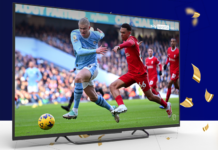Power monitors can help cut costs, writes Innserve’s Steve Lakin

COOLING is essential for serving the best pint to the customer, but it is also a significant expenditure; as energy prices continue to rise and budgets are squeezed from all sides, landlords need to work smarter to make their businesses more energy efficient.
Savings can be made through continued staff training, good cellar management and care of equipment.
The installation of the latest energy saving technologies can also make a considerable contribution to reducing energy costs and boosting green credentials.
The energy used for cooling beers and soft drinks typically accounts for more than 10% of a pub’s total energy expenditure, according to the Carbon Trust.
By improving the cellar layout, installing thermal insulation and draught stripping, replacing heat-generating traditional lights with fluorescent bulbs, conducting regular checks on refrigeration equipment, and ensuring regular maintenance takes place, a landlord will help to reduce energy costs for cooling.
Making sure the cellar and all equipment are operating at the correct temperature can also make a big difference. For instance, overcooling the cellar by 1°C can add up to 10% to cellar energy costs.
As all landlords know, serving beer at the correct temperature is essential to ensure customer satisfaction. Research has shown that over 90% of customers rate quality as the most important factor in their pub experience, meaning that a bad pint is bad for business.
From the village local to the town centre venue there is a cooling system to suit all requirements, and to ensure the best pint is served every time.
Irrespective of size, all cooling systems are designed to maintain a constant temperature set at the optimum level for the specific product.
Innovations in technology have also brought a new generation of energy saving devices to market. For example, by installing an intelligent power monitor on each of your beer and soft drinks coolers and ice makers it is possible to make significant savings: on average between 30-35%, equating to £170 to £600 per cooler, per year. These reductions in energy costs also mean lower carbon emissions, helping to boost green credentials.
By initially gathering information on the operating requirements of cooling equipment, the intelligent power monitor can calculate the usage pattern of the cooler. Following this ‘learning’ period, which is typically between one and two weeks, the power monitor will be programmed with the establishment’s opening hours and will be set to ‘optimising’ mode.
Using the information gathered during the primary assessment period, the power monitor will be able to gauge the best time to completely switch off the load. This can be done without compromising functionality – a vital consideration to ensure that beer is served at the optimum temperature and remains fresh for the maximum time possible.
One energy monitor device is required for each cooler and offers a simple plug-in energy efficient solution. They are designed to be used on draught drinks cooling equipment for beer and mineral soft drinks including cellar remote beer coolers, soft drinks coolers, under-bar flash coolers and mini remote cask coolers.
• Steve Lakin is contract manager at Innserve.



















